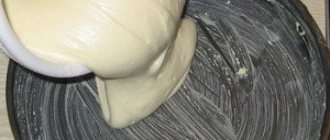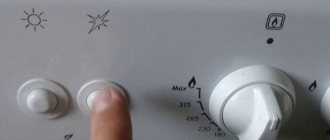Gas equipment requires special attention and accuracy in operation: we should not forget about the many examples of household gas explosions. In 2018, on December 31, a similar disaster destroyed 40 apartments, people found themselves under the rubble when the frost outside was below 20 degrees. Therefore, if any problems arise with gas equipment, the best solution is to call a specialist.
Quite often, the breakdown turns out to be minor - the tap on the stove, riser or column turns tightly. Often repairs come down to replacing the lubricant. The craftsmen prudently do not disclose the brand, but from GOST standards the Miss Clean resource found out how to lubricate a gas tap without compromising safety.
Where are they used?
Industrial gas equipment includes devices designed for transportation and storage, processing and distribution of gas. The main components of the complex are pipeline fittings, gas control units, pressure regulators, safety valves, gas analyzers, gas flow metering devices, boiler units. Seal lubricants are used to lubricate rotating equipment elements. They are one of the types of grease. Unlike oils, such formulations include thickeners and additives that enhance the properties of the substance. The thick composition of lubricants minimizes friction in rolling bearings, hinge, chain and screw mechanisms.
Greases are perfectly fixed on inclined surfaces; their density seals the joints of parts. They are able to withstand high temperatures. Premium class compounds used for gas equipment do not drip from the devices even if the operating temperature limit is exceeded.
Greases are divided according to their areas of application into the following:
- Antifriction - protecting mechanisms from wear. Depending on the conditions of use, they may have a combined set of properties: withstand frost or high temperatures, withstand the effects of chemically aggressive environments, and exhibit stability in conditions of high humidity.
- Sealing - necessary for sealing joints.
- Highly specialized - created for use in a specific industry, for example, food, chemical.
- Conservation - protecting equipment during shutdown.
Lubricants for gas equipment are classified as anti-friction and sealing lubricants. They must withstand loads, create a dense film between rubbing parts, ensure smooth movement, and remain on the surface of the joints.
Note! Lubricants can react with metal, causing additional corrosion. Such compositions are unacceptable for use in the treatment of gas systems. The lubricant should be as dense as possible and the moisture content should be minimal.
Characteristics
Sealing lubricants are divided into 3 types:
- Reinforcement.
- Threaded.
- Vacuum.
Reinforcement lubricants are intended for sealing fittings of gas mains, distribution stations, taps and threaded connections. Lubricants “For gas taps” are widely used, which include:
- base - castor oil;
- thickener - calcium soap.
There is also a more heat-resistant composition used for sealing shut-off devices in oil and gas fields - Armatol-238. It includes:
- base - emulsion of castor and synthetic oils;
- thickener - aerosil;
- graphite.
Lubricants have parameters (using the example of Armatol-238):
- Dropping point - shows the melting temperature of the thickener and the disruption of its structure, after which drop formation begins (160°C).
- Penetration indicator - reflects the thickness of the lubricant. It is equal to the number of mm of immersion of the measuring device cone, multiplied by 10 (10-1 at 25°C).
- Shear strength is the load at which irreversible disruption of the frame bonds occurs (up to 150 Pa).
- Viscosity - shows losses due to internal friction (less than 150 Pa-s at 0°C).
- Colloidal stability - the degree of release of oil from a lubricant under the influence of external forces and temperature (up to 15%).
- Corrosion stability - the ability to cause metal corrosion (—).
- Water content (up to 0.5%).
Also in lubricants, the degree of solubility in various chemical compounds, the content of foreign impurities, and main components are determined.
Thread lubricants are intended for sealing joint joints of pipes of pumping and compressor equipment, gas condensate wells. In industry, the use of the P-402 composition is widespread, which includes:
- petroleum oils;
- organosilicon compounds;
- thickeners in the form of lithium and aluminum stearates;
- graphite, zinc, copper, lead.
Thread compound is characterized by increased heat resistance (-50...200C), low moisture content (up to 0.1%).
If it is necessary to create a vacuum environment, use vacuum lubricants. They are unstable and can only be used at temperatures of -10...40°C, but they are distinguished by high water resistance and preservation characteristics.
Storing gas equipment in a warehouse involves the use of lubricants: gun lubricant (GOST 19537-83), as well as conservation oil (GOST 18974-73). In addition to purchased lubricants, they use compositions made from heated instrument oil and paraffin crumbs dissolved in it, as well as from wax, turpentine and anhydrous fat.
What to lubricate
General requirements: the lubricant must withstand high pressure, be resistant to wear and frequent loads, and most importantly, be heat-resistant. This is what distinguishes the special product from ordinary graphite.
The standards offer the following options:
- Plitol M is a lubricant based on thickened petroleum oil and contains an additive that increases the wear resistance of the layer and parts. This product can easily withstand temperature loads of up to 150 degrees, a one-time increase to 180 degrees, however, it is intended only for indoor devices, because it loses its properties at temperatures below 0.
- For gas taps - a product for gas lines based on thickened castor oil. This lubricant only holds 50 degrees, which means it cannot be used on the stove. At the same time, the lubricant tolerates pressure up to 50 MPa, which makes it an excellent solution for valves on columns and risers.
- Cranol has similar characteristics to the previous type.
- LZ-162 is a multi-component lubricant based on petroleum oil, has maximum protective properties (withstands up to 90 MPa, retains its qualities in the range from –25 to +130 degrees) and is used in oil wells. If you somehow happen to have such a lubricant, it will be more than suitable.
If you pay attention to the composition, you can see that household lubricants contain thick castor oil. Ordinary mineral lubricant, as a backup option, can temporarily replace special lubricant for gas stoves.
Important: Lubrication is the most common problem in gas valves. However, similar symptoms appear when there is a mechanical malfunction of the device. Therefore, the resource mschistota.ru strongly recommends that you entrust the diagnosis to specialists.
What should not be used to lubricate
Non-mineral oils (vegetable, butter, etc.) are strictly not suitable for lubrication - this is a fire hazard!
Solid oil and lubricants based on it are not suitable for lubricating turntables on a stove. These products are semi-liquid and do not hold temperature well, they flow and can ruin the stove.
Selection of gas valves
If a malfunction is detected in the operation of the gas valve, it is recommended to replace the device as soon as possible. First of all, you need to select a new valve. When choosing, experts recommend considering:
- type of valve;
- basic device parameters.
The gas pipe valve can be:
- cork. The body of the plug valve contains a conical element driven by a flywheel. There is a hole in the conical element (plug), which, when combined with a hole in the pipe, allows gas to flow to the equipment. The seal acts as a sealing material that seals the connection between the faucet and the pipes;
- spherical The design of a ball-type gas valve differs from a plug valve in that the locking mechanism is based on a ball made of durable metal. The ball has a hole, which, when the flywheel is turned, is located along the gas pipeline and in this way passes gas to the consumer.
According to the method of connection to pipes, a household ball valve can be:
- threaded The valve is connected to the gas pipeline pipes with a threaded connection;
- flanged. The connection to the pipes is made using flanges, which in turn are fixed with bolts;
- welded, that is, installed using a welding machine.
Threaded and flanged valves are reusable, that is, if necessary, you can remove the device from the gas pipe, check its functionality, carry out repairs and install it in its original place. The welded valve can only be installed once.
Basic selection parameters
To select a gas shut-off valve, it is recommended to pay attention to the following factors:
- pipeline diameter. The shut-off element of the valve must completely block the pipe in the apartment. If the valve is larger or smaller, the tightness of the tap will not be complete;
- pitch and diameter of the thread on the pipeline. To quickly replace the device, it is necessary that the specified parameters completely match. Otherwise, you will need to purchase and install additional adapters;
- the material from which the gas pipeline valve is made. It is more advisable to purchase brass taps, as they have a longer service life. You can also find silumin, zinc and plastic taps on sale. You can distinguish the material used to make the valve by weight. Brass faucets are heavier than faucets made from other materials. In addition, you can inspect the place where the thread is cut. Brass has a yellow tint, and all other materials (except plastic) are gray;
- The valve body must be free of chips, sagging, cracks and other defects. The presence of these factors indicates non-compliance with the rules for manufacturing the product, which will lead to a reduction in service life;
- It is more advisable to purchase valves from well-known manufacturers. For example, you can choose cranes manufactured by Bugatti (Italy), Dungs (Germany), Broen Ballomax (Poland).
Following simple rules when choosing a gas valve will allow you to choose a reliable device with a long service life.
Solving the problems of plug valves in modern versions
got rid of my plug taps
from these disadvantages, thanks to the use of
a special
seal that
prevents
the plug from sticking, therefore they are very
easy
to operate and very popular when used with aggressive and abrasive media, for example for installation on pipelines with brine.
FluoroSeal to solve your seal
, uses specially patented adjustment
tight fit of the plug to the seat.
The process is very simple
, there is a small bolt on the outside of the case that can be tightened with a regular hex key; when it is tightened, the plug moves and increases the tightness of the fit. The same mechanism decides
the problem
of repair
when the seal wears out, in such cases the seal density simply
increases
and thereby
restores
the previous performance
without stopping
the technological process for repairs and maintenance.
Ensuring the tightness of plug valves
To ensure tightness
tap and ease of turning the shutter, various manufacturers use several
options, including
lubrication system is also used
in the valve body, and for valves used for pumping
oil with a high level
of paraffin
, a
heating
.
Application areas for plug valves
Plug valves are used on many pipelines in the following areas:
Plug valve for petroleum products
Plug valves for alkylation processes
Plug valves for aggressive media
Composition and capacity
Lubricants for industrial gas equipment include a liquid base and a thickener. The basis is:
- glycerol;
- petroleum oils;
- synthetic compounds.
Thickeners for compositions are salts of high molecular weight fatty acids or “soaps”.
To increase heat resistance and tightness, additives are included in the lubricant:
- mica;
- graphite;
- molybdenum;
- fluoroplastic chips and other components.
You can purchase lubricant in mini-packages or large containers. For example, Molykote 1102 is available for single use (50 g, 12 pieces per package), in containers weighing 1 kg and 25 kg.
The compositions are applied with a brush, spatula, gun, or using automatic equipment.
The gas valve does not rotate well, what should I lubricate?
Actually, the gas valve does not rotate well, what can be used to lubricate it. Or is there nothing that can be done, just a replacement? The faucet is almost the same as in the photo (the only difference is the shape of the valve)
DON’T YOU DARE “LUBRICATE” ANYTHING! You're not going to live forever, are you?
Clearly, that means the only thing left is replacement
You can lubricate it, but to do this you need to disassemble the tap. To disassemble it, you need to turn off the gas to this tap. Apply graphite grease, but not too much.
Option one: First we try to tighten it. The plug on the back with a slot on the thread. / we tighten it, the spring compresses, the cone moves /. If it skips or turns hard, we disassemble it. Graphite lubricant. Not automotive. The tap is lubricated during complete disassembly. Do not fill the hole inside the cone with grease. Option two / the most convenient /: we immediately tempt you with a ball one. At the same time, we change the eyeliner to a flexible one. / appropriate /
Ahfyrtyintqy wrote: To disassemble, you need to turn off the gas to this tap
What are you doing? Have you ever seen how pipes are boiled without turning off the gas?
Mutru4, All right! On TV. True, this will happen a few more times *supposed*
Yes, at least with anything other than butter, sunflower, olive. But it's better to change.
I used vacuum lubricant at the dacha, the flight was normal, and there was no other
The only true option
This crane has served its purpose.
umkas wrote: I used vacuum grease at the dacha
my favorite lubricant!
Why spin it at all?
Let's wait. By the way, when making taps they only lower the pressure in the gas pipeline. It won’t just end in the pipe. So this is its own specificity.
Kasimov Absolutely right. A gas pipe with one gas is much safer than a pipe with a mixture
Carefully unscrew the nut on the cone plug and remove the washer. Then the conical plug is simply pulled out. The gas will naturally begin to come out, only the pressure there is only 120 cm of water column. After removing the cone stopper, a rubber cone stopper from a chemical vessel is stuck there. It fits there in the appropriate size, as it was there, after that you can easily clean the valve plug, remove dirt, lubricate it with a special lubricant such as graphite, only gas workers have their own lubricant. That's it, we're done. Take out the rubber plug and put the cleaned and lubricated brass plug in place, put in the washer and tighten the nut. After that, take a shaving brush, soap and water, and cover the tap with soapy foam. Watch for a couple of minutes. Don't bubble, give yourself a high five for a job well done.
Crosser CR8E Mantis TS-350 with Lombardini diesel engine
Inspection process of a plug cone coupling valve
Use a flat-head screwdriver to unscrew the screw plug.
Use a flat-head screwdriver to slightly turn the tap plug, pressing on it. Use the finger of your other hand to hold the plug. When it jams, you can tap the screwdriver a little with a hammer.
Do not damage the inner surface of the faucet with a screwdriver and do not drop the plug to avoid scratches and nicks!
We wipe the faucet body and plug with a rag. Dried grease can be removed with gasoline or alcohol.
Using a screwdriver, remove the remaining old grease from the plug.
Apply a thin layer of lubricant to the plug.
Place the lubricated plug into the housing.
We fill the grease into the cavity where the spring is located.
Place the spring in the groove of the plug.
Lubricate the threaded plug and screw it into the housing several turns with a screwdriver. The spring should fit into the groove on the plug.
By tightening the screw plug with a screwdriver, we adjust the smoothness of the tap. We check by turning the plug with a screwdriver. The tap should not turn with force, but it should not move too easily.
How to properly lubricate a faucet
The general algorithm for repairing any gas tap comes down to the following steps:
- Shut off the gas supply.
- Disconnect the power supply in the panel room. If access is blocked for some reason, then unplug all electrical appliances and lamps.
- Remove all flammable materials and utensils (including matches, solvents, etc.).
- Close the door to the kitchen and open the window.
- Disassemble the tap.
- Plug the riser pipe with a damp rag.
- Apply lubricant.
- Remove the rags and assemble the faucet.
- Ventilate the room.
Disassembling the crane requires experience and extreme care. If you need to lubricate the gas duct on the stove, you will have to remove the turntables (flags) and the front or top panel underneath them. The faucet device will open.
For Hephaestus-type stoves, there is no need to lift the panel with the burners - the front cover can be removed by itself, and quite simply, since it is attached with self-tapping screws. The taps are fixed with flanges with two screws - to remove them you will need a Phillips screwdriver.
Old "Brest" type slabs are equipped with a different fastening mechanism: there is only one screw, it goes into the coupling and tap. The device itself is most often conical, and the nuance is that, after removing the plug, you must carefully remove the spring and not lose it.
As a rule, there are ball valves on the riser and boiler. They are quite easy to disassemble - you need to remove the fastening screw and remove the mechanism.
You need to remove the plug from the tap and treat it with lubricant, being careful not to clog the holes.
Important: “Miss Clean” magazine reminds that, according to current laws, owners are responsible for the prevention and proper condition of gas equipment inside the apartment. Therefore, there is no need to wait for a scheduled inspection - call the gas service at least once a year, especially if the communications are already old.
Maintenance of equipment must be carried out regularly. As experts note, dirt, grease, debris quickly accumulate inside the stove, and sometimes cockroaches and even mice settle in.
A gas service specialist will handle this task quickly and efficiently. At your own risk, you may disassemble and lubricate the taps yourself. The easiest way to carry out the procedure is with valves on the stove itself (the gas needs to be turned off at the column). In any case, after all procedures it is necessary to ventilate the room thoroughly.
The inspection process of a plug cone tap through tension
Holding the tap plug with a handle, use the 17th key to unscrew the locknut and the nut in turn.
Remove the limit washer.
We press our finger on the pin of the cork, turning the cork with a handle. When the plug jams, you can lightly tap the stud with a hammer, after screwing the nut onto it first, so as not to damage the thread. You need to hit the nut!
Cleaning the plug and body, followed by lubrication and assembly, is carried out in the same way as a coupling valve. We clean the restrictor washer from old grease.
Apply lubricant to the valve body where the limiting washer meets.
We put the limiting washer on the groove of the stud. To do this, place the tap plug in the half-open position.
Screw the nut through the slot onto the faucet plug.
By tightening the nut, we adjust the degree of tension of the tap. We check by turning the tap handle. The tap should not turn with force, but it should not move too easily. We tighten the locknut.
Once again we check the smoothness of the ride.
Areas of responsibility
The first and main thing that the reader should pay attention to is that the inlet valve in the apartment falls under the responsibility of GorGaz or a similar organization operating in the area where you live. Both the repair and replacement of valves, and their periodic inspection, and the connection of gas equipment (stoves, boilers, convectors, hobs) should be handled by the mechanics of this organization.
Once again: you carry out all actions with gas equipment at your own peril and risk. The consequences of mistakes can be the most severe: a household gas explosion is perhaps the most terrible event in an apartment building, often turning it into a heap of construction waste. If you have even the slightest doubt about your ability to complete all the work, and to do it quickly and correctly, invite a specialist.
- you have quite a lot of experience in locksmith work; in particular, you have had to change valves and valves under pressure;
- you know where the power is cut off in your apartment, and you have access to the switchboard and the machines in it;
- the gas pipe in front of your valve has no visible signs of corrosion;
- at your disposal are plumbing tools (at least two gas wrenches No. 1 and/or No. 2), sealing material for threads and grease or graphite lubricant -
the following text will help you replace or repair the gas stove tap yourself.
Do-it-yourself lubricant for gas stoves - Metalist's Guide
Repairing a gas stove with your own hands is prohibited by Russian law. True, criminal liability is not yet provided for; if an accident occurs, troubles are expected. In the hero city of Volgograd, one smart guy introduced combustion products from a water heater into the ventilation hole. 4 people died.
The authorities classified the case based on the article causing death by negligence. Gas service technicians have the right to replace equipment and perform service work. This is relevant, starting with connections and ending with switching to a different type of fuel.
Below are a couple of recommendations, not a user manual, just general techniques.
Installation of a gas stove with electric ignition
Darina, Hansa, Ardo – so different and at the same time the same. The repair of gas stoves by Hephaestus is exactly like the repair of Ariston; gas stoves are made up of standard units. It is enough to look at a single device to understand the circuit.
Have a reference book to help you properly maintain gas pressure. When set correctly, the flame is even and blue. Orange flashes indicate an imbalance in the fuel mixture.
If the settings are incorrect, the flame will fail (especially typical for carob ovens).
For those who have read the reviews of the VashTekhnik portal regarding gas instantaneous water heaters, independent repair of gas stoves will seem like child’s play! You cannot do it yourself, but you can clean the device.
The technician will have to clean candles, combustion sensors, burners, and sometimes nozzles. There are a lot of interesting things inside the gas stove. Anyone learning how to properly clean equipment should understand what we will see inside.
Under the gas stove table:
- Burners. They are often bolted to the gas stove table. Each burner consists of a lid, a divider, and an injector (nozzle). They are not rigidly fastened under the table; each is fitted with a steel or copper tube; the fastening is carried out like an American one. You will need a key of approximately 13 to remove the products. It is more convenient to clean if something is clogged inside. Beware of tearing off the head or thread - you will have to replace it. After assembly, check the tightness by washing. The procedure involves applying foam to the disputed nodes.
- There are two candles around the perimeter of the burner. One serves as ignition (due to a piezoelectric element or an electronic circuit), the second is a thermocouple, included in the combustion control circuit. It's quite easy to distinguish. The high-voltage spark plug is covered with a ceramic caftan so that the spark does not strike below a predetermined level. When the arc flows, you can see: the tongue of the discharge licks the body of the burner. Gas stoves with electric ignition will be properly grounded by a technician. Beware of using plumbing connections or connectors pierced with metal threads. During installation, the hoses are separated from the riser by special gaskets. Failure to follow the rule will easily provoke an explosion in favorable situations. We wrote in more detail, we remind you again. The candle with a thermocouple is covered with a bronze caftan that conducts heat. The faster the semiconductors cool down, the flame goes out, and the protection that cuts off the gas supply will work more reliably.
- Most often there is a collector under the table. A thick tube from which a line goes to any burner. The gas flow is controlled by solenoid valves. The number is usually equal to the number of burners. When the burner flame goes out, the rest will burn. The expediency of the decision can be challenged, but this is how it is done. Each solenoid valve contains an inductor. The thermocouple heats up, an EMF (tens of millivolts) appears, keeping the devices open. Complete activation procedure: turn the gas supply regulator, press down. We press the piezo ignition button, or the electronic circuit performs a set of procedures independently. We hold the handle for a fixed time. The thermocouple warms up, an EMF begins to be generated, the electromagnetic valve is held open due to the phenomenon discovered by Seebeck. As soon as the gas goes out, the sensor plug cools down and the gas supply stops. The process is inertial, we believe that the day is not far off, flame ionization sensors will begin to be used in gas stoves, allowing the protection to operate instantly.
- Similar to the gas manifold, there is a distribution valve panel inside. Single high-voltage wires run to each ignition electrode. Another way to distinguish a thermocouple: two wires with a thinner cross-section stretch to the sensor. The spark breakdown goes to the housing, the second ignition wire is superfluous. If the gas stove is deprived of grounding, we have a chance of getting an electric shock. The potential for fatalities is an additional reason to have the installation done by a professional. The collector is connected via connectors. There is protection against incorrect orientation of the plug; you can easily mix up some places. When you open the burner, a spark will jump on another divider. It’s not very pleasant, a flash of flame is possible.
- If the charge is generated by an electronic circuit, you will find a simple thyristor, diode, capacitor, and fuses inside. The circuit operates, powered by a capacitor charge with a subsequent burst of energy from the spark gap of the spark plug. Repair of electric ignition of a gas stove concerns the listed elements. The fault is easy to notice. Burnt elements are black or similar in color.
Setting up a gas stove for a different type of gas
Gas is endowed with two significant characteristics:
- The calorific value is determined by the composition. The higher the methane content, the lower the parameter. For natural gas, the calorific value is predetermined by the location where the natural resource is extracted.
- The pressure depends on the type of gas. Liquid requires higher. For the main line, the typical value is 13 mbar. The parameter ensures the correct operation of solenoid valves, injectors, and burners.
If the pressure is too high, the gas does not burn completely, soot and orange flames will appear. The system may not operate correctly. I have come across instructions recommending the use of a reducer to obtain 13 mbar from a balloon.
There are probably restrictions. It is not without reason that it is recommended to place two cylinders in parallel. Please note that the main gas is actually liquid, supplied through a reducer. It is pumped from tanks into containers from which houses are supplied.
Find out the wiring diagram for the house where you live. There is natural gas distributed centrally, which has lower cost, pressure, and calorific value. The pressure is assumed to be 13 mbar.
This aspect must be taken into account when installing and repairing a gas stove.
The reason to call professionals for installation and configuration is that the specialists know the parameters. Of course, a person with a certificate is also aware of local conditions.
Now imagine what will happen if you unknowingly connect the equipment incorrectly! It's a gas, stop joking. This is especially true in the outback, where neighboring houses may have different connections.
It is recommended to purchase a set of replacement injectors for different gas pressures. They described the process of boring jets with their own hands and mentioned that the law prohibits rework. The work is unsafe.
Before purchasing, ask your gas service for the parameters and ask the store if the equipment is suitable. It’s not too late to start making inquiries during the next cleaning. It's not a fact that everything was done correctly.
How to adjust jets. The size of the central hole changes. Less pressure, the hole becomes larger. Verticality and alignment must be maintained, otherwise gas will leak to the side, which will lead to an accident. It is appropriate to recall that in old Soviet gas stoves the jets are hidden deep inside.
The design of the burners is unusual. Between the nozzle and the divider there is a tube with a pair of ears attached to the frame. There is one frame for every two burners. In pairs, the pipes are attached with ears inside the housing. A bowl with a nozzle is placed at the lower end, and a divider is inserted into the upper end. The gas stove operates using a jet stream.
Propane-butane is heavier than air.
The peculiarity is that opposite the nozzle there is a tube with a radial cutout. Needed to unscrew the hex nozzle without using a long socket wrench.
In modern gas stoves, the jet is located under the flame. A different arrangement improves traction and discourages ordinary people from climbing inside the stove.
Repairing a gas stove with your own hands is a dangerous business.
Electric stoves today also look like a more appropriate option for summer residents.
How to repair a gas stove with your own hands? Do-it-yourself gas stove maintenance
It's no secret that during operation, gas equipment, like any other device, tends to fail.
Therefore, in this article I would like to give some advice to those who have their hands on their shoulders and for those who would like to save a couple of thousand rubles on repairing a gas stove.
After all, the services of a specialist can cost a pretty penny, but you can do the work he does yourself in about ten minutes.
Therefore, before you begin any manipulations with your beloved cooking appliance, be sure to turn off the lowering tap (the tap that is usually located on the wall, behind someone’s stove or hidden in the kitchen unit), just in case, open the window or window and disconnect the electric ignition cable, if equipped.
If the burner burns weakly
Well, now let's figure it out. The most common malfunction of gas stoves is that the burner flame disappears completely or partially due to clogged nozzles or gas burner dividers.
This happens due to inaccurate cooking - small holes are filled with boiled soup, milk, etc., clogged with crumbs, as well as during the process of cleaning the gas appliance with powders.
Safety regulations
Working with gas equipment has an increased level of danger, so safety rules must be followed. When carrying out independent work to replace or repair a valve on a pipe, adhere to the following rules:
- All manipulations with gas equipment are carried out with open windows.
Mandatory air ventilation in the room when working with gas
- Electricity must be completely turned off throughout the apartment.
- During work it is prohibited to smoke or light matches.
- Repair work is carried out only during daylight hours, ensuring good daylight.
- The door to the room where equipment replacement activities are carried out must be tightly closed.
- The public access valve must not be closed. This increases the concentration of propane and the risk of explosion.
- It is better to do the work collectively. This will speed up the process and minimize errors.
- If the gas equipment and pipe are old and there are visible signs of corrosion, you should not carry out any manipulations yourself.
- It is necessary to provide the repair work site with fire-fighting equipment.
Having a fire extinguisher in the kitchen will ensure safety in the home.
Compliance with safety rules is not just a requirement for reinsurance. These measures will help keep the home and people's health safe and sound.
So, replacing a gas tap yourself requires the owner to have certain knowledge and skills in this area, the availability of the necessary tools, as well as reliable, high-quality lubricant for the tap. The sealant will allow you to safely use the gas valve and increase the service life of the entire system.
Sources of danger
There are, in fact, only two of them.
The fact is that independent work related to opening the gas pipeline will inevitably lead to a gas leak.
- At a certain concentration of natural gas or propane-butane mixture in the air, it will become unbreathable.
- Long before this, the gas-air mixture will become explosive. The slightest spark when turning on an electrical appliance, triggering any relay (for example, a convector thermostat) or clicking a light switch will lead to exactly the consequences that we tried to warn the reader against in the first section of the article.
The rules that will help avoid negative consequences are quite obvious.
- All work is carried out with windows wide open throughout the entire apartment or house. Yes, yes, regardless of the time of year. Don’t be afraid that your favorite cactus will freeze: if everything goes well, forced ventilation will last no more than 10 minutes.
- The room must be completely de-energized. What the instructions relate to is, I think, clear from the previous explanation. Take it seriously: as already mentioned, the cost of a mistake can be the highest.
An important point: under no circumstances try to shut off the common valve on the gas riser with your own hands while you work. Once you open it, gas leakage from under its cap is almost inevitable. In this case, its consequences will be much more severe than in an apartment - simply because of the larger volume of the resulting explosive mixture.
General standards
First, it’s worth finding out under what circumstances gas pipes are used in the kitchen. The use of blue fuel in such a room most often means installing a stove. It's time to familiarize yourself with the terms of use. So, remember the main postulates:
- gas stoves are allowed to be installed in kitchens with a height of 2.2 meters (if the ceiling in the room is sloped, then to install the stove you should choose a place where it reaches the established norm);
- the kitchen should be equipped with a window with a window so that during the day repair work can be carried out without artificial lighting, ventilating the room (the presence of a functioning ventilation duct is welcome);
- between the slab and the opposite wall there must certainly be a passage with a width of 1 meter;
- ceilings and walls made of materials prone to combustion, according to standards, must be covered with plaster;
- The stove can be used in kitchens separated from the corridor by a secure wall/partition and door;
- The installation of gas pipes in the kitchen should be done so that the distance between the walls and the stove is at least 7 centimeters;
- branching to the slab is allowed only at the level of the connecting fitting;
- the shut-off valve should be installed at a level of 1.5 meters from the floor and at a distance of 20 centimeters from the side of the stove;
- To install the stove, it is permissible to use a special (heat-resistant - from 120 degrees) flexible hose and do not forget to change it, based on the recommendations specified in the product data sheet.
The standards for handling mainly already installed pipes and devices connected to them are indicated. If you plan to change, move, or even cut the gas pipe in the kitchen, then move on.
This is how you can hide a fragment of the network if it bothers you - without any transfer











